This post on Hudson Bay, Saskatchewan was created in collaboration with the Town of Hudson Bay and Tourism Saskatchewan. It is part of a series of videos and articles based on a five-day trip myself and photographer and filmmaker Matt Scobel had as guests of the town. As always, the adventures, stories and information provided in these articles are genuinely and authentically my own and based on personal experiences.
Hudson Bay, Saskatchewan is known as a sled town. In the winter months, the town revolves around enthusiastic snowmobilers who come every snow season to play in the soft powder. But in the summertime? It’s arguably even more epic to explore as an outdoor destination.

Tucked into the Red Deer Valley between the Pasquia and Porcupine Hills – in 5 million acres of provincial forest – there seems to be no end for adventurous, off-the-beaten-path exploration.
Here are ten of the best outdoor activities to enjoy in the region:
1.Geocaching
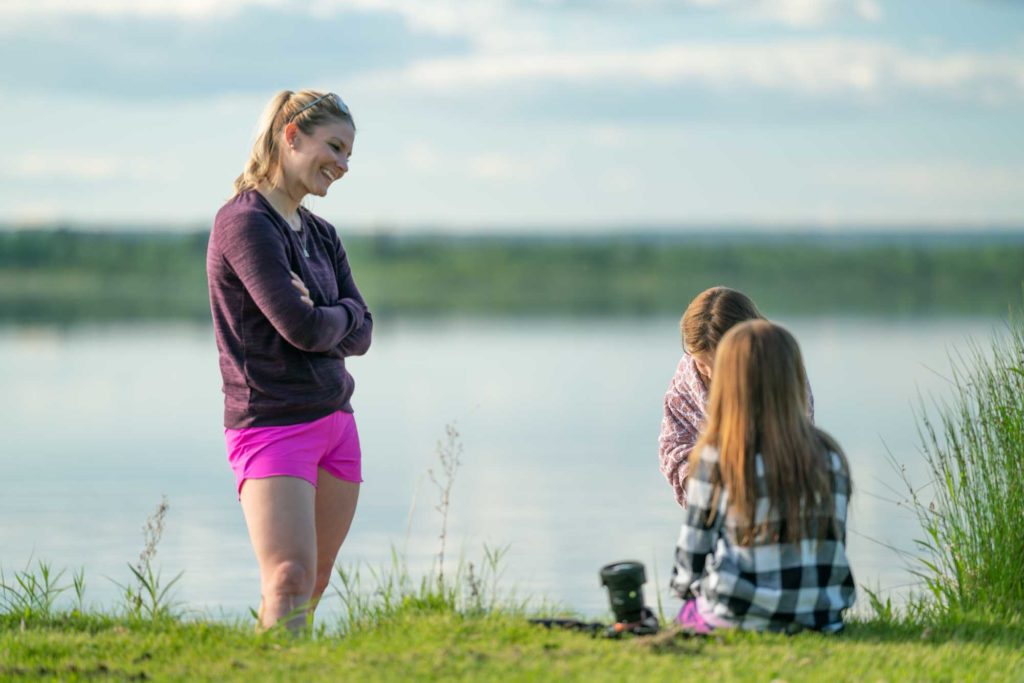
Geocaching is a modern-day treasure hunt. The free Geocaching app guides geocachers to hide-and-seek containers filled with treasures in locations all around the world.
Saskatchewan has 11,000 geocaches hidden around the province and 30 are within 10 miles of the Town of Hudson Bay. Most are in family-friendly locations and each one has a logbook and little treasure to discover inside.
While visiting Ruby Lake, I was approached by several young children camping with their parents (their mom was familiar with my blog and had even messaged me about my trip to Hudson Bay.) Coincidentally, we had all just been Geocaching. The kids were excited to hear I had just found a cache and wanted to help me find another. So we joined forces. I loaded up the app and we went on a treasure hunt around the Ruby Lake Recreation Site in search for a hidden cache.
Only in small towns do you bump into people you just met and go on impromptu treasure-hunting adventures with them!
2. The Views from Brockelbank Hill

Who said Saskatchewan is flat? At 810 metres (nearly 2700 feet) above sea level, there is an epic prairie peak near Hudson Bay. Southeast of town along the Woody River Road (Highway 980) is an amazing view from Brockelbank Hill.
The scenic viewpoint is the highest point in the Porcupine Hills with sweeping views of the Red Deer River Valley lowlands east of the Pasquia Hills.
Keep your eyes on your rearview mirror if travelling southwards as you might not realize how much elevation you’ve gained and miss the pull-off point. We were too busy spotting bears on the side of the highway and had to backtrack nearly 10 kilometres. But it was worth going back to capture photos of the view.
I’m also going to go ahead and officially declare it a Saskatchewan mountain.
Interesting Fact: The viewpoint is named after Honourable John HewGill Brockelbank who was a member of the legislature for nearly three decades, from 1938-1967.
3. Paddleboarding Woody Lake Weir
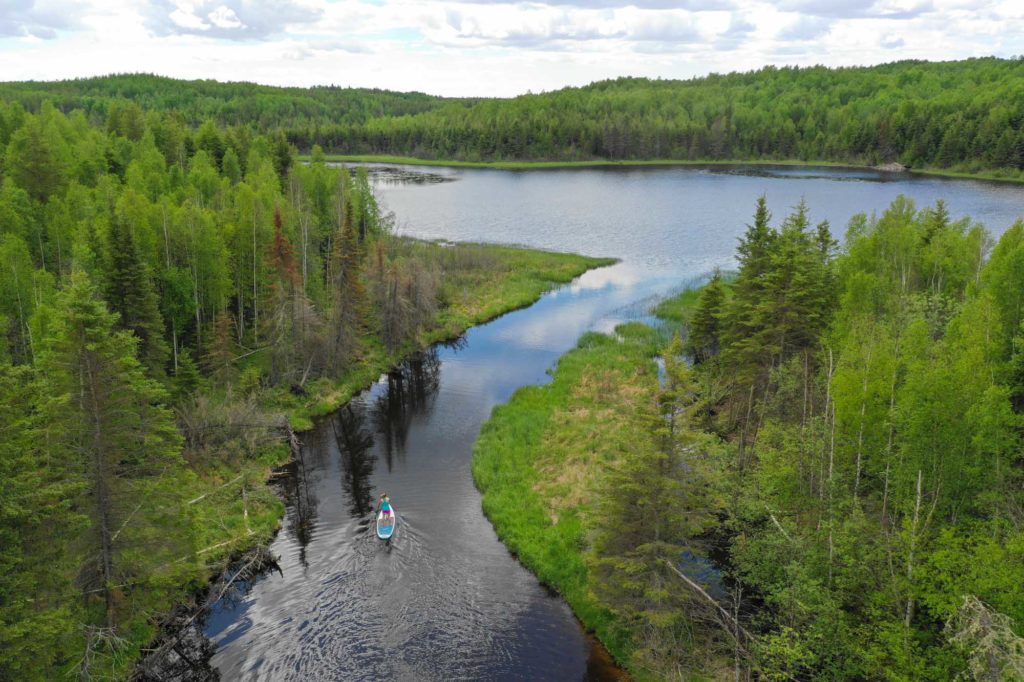
It’s a location we got the down-low on from a couple of Saskatchewan Parks employees (so we consider it insider-information.) While camping at Spirit Lake Campground we bumped into two employees who offered to show us to the Woody Lake dam.
And it is the perfect place to paddleboard (and picnic!)

The water levels were lower than normal and I was able to hop, skip and jump over the rocks and put in on the other side on the grassy shoreline. It was a bluebird sky day and the water was calm and reflective like a mirror. Matt’s pup Alpine and I paddled back and forth through the outlet, relaxing on the board in the sunshine before loading up and heading back to Hudson Bay.
4. Canoeing the Red Deer River
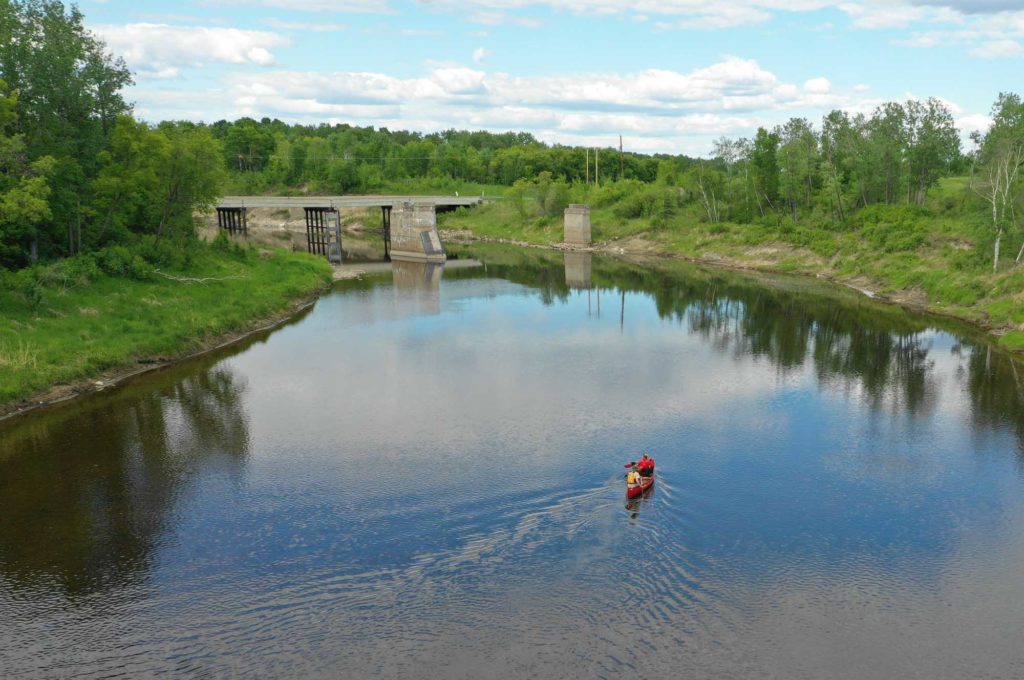
Both the Fir River and Etomami River drain into the Red Deer River which makes its way to Red Deer Lake across the border in Manitoba. (Etomami is an Indigenous word which means “where 3 rivers join”).
It’s a popular canoe route that’s recommended in late spring or early summer when water levels are higher.

We joined up with local paddler and fisherman Randy Dalziel who took me out on the water. We only had time for a late-afternoon paddle so we put in near the small hamlet of Erwood. We paddled upstream, trying our hand at fishing as we drifted back underneath the remains of the old bridge.
Day-trippers can launch at the Regional Park site outside of Hudson Bay for a 27-kilometre paddle to Erwood (about 5-7 hours) but there’s another launch site mid-way at Ridge Road where you can pull out early.
For those interested in paddling the 120 kilometres to Red Deer Lake, plan for four or five days, pending river level and flow. Check out Sask Border’s blog on his experience paddling the river with a group of friends last summer. Make sure to ask around town in advance for the most up-to-date river information.
5. Hiking Hudson Bay Regional Park Trails

Hudson Bay Regional Park is 2 kilometres south of town on the junction of the Fir, Etomami and Red Deer Rivers as well as on the site of 300-year-old Fort la Biche fur trading post (so much history in this region of the province!) Along with the campgrounds, golf course and baseball diamonds are several kilometres of nature trails.

The marked hiking paths begin in the campground and wind their way along the riverbanks and through the dense forest. The paths are well maintained with wooden boardwalks over boggy sections and around massive trees part of the old-growth forest. There are signs posted for hikers in search of rare flowers. There’s also an old cabin in the forest to visit.
6. Kayaking

We launched at the dock at Woody Lake with our kayaks to paddle around the area but there are so many different lakes and rivers to in the area to enjoy.
Another morning I popped down to the launch point in the Regional Park and paddled through the rocky whitewater on the Red Deer River under the bridge on the Saskota Flyway (Highway 9).

Interesting Fact: The highway is also known as the International Road to Adventure because it leads all the way south to Bismarck, North Dakota.
7. Watching Wildlife

Hudson Bay is well-known as the “Moose Capital of the World.” But there are a variety of other animals to keep an eye out for too. We stopped to catch a Great Grey Owl flying through the trees on our way into the Porcupine Hills. We saw several black bears on the side of the highway and heard there was a sow with four cubs near Townsend Campground. We also heard rumours of a lynx spotted nearby.

Wildlife is so common in the area that white-tail deer frequently wander through town. On our first night, we spotted a brand new Bambi toddling through someone’s backyard behind its mom.

On our way south of town, we watched a healthy coyote hunt for mice in the tall grass.
8. Fishing

Fishing is amazing in Hudson Bay (so I’ve been told as I never did catch anything while out canoeing. I’ll blame it on the wrong time of day and spending more time chatting than casting). But the region has dozens of clearwater lakes, rivers and streams with abundant fish stocks.
You’ll find Brook Trout, Walleye, Perch and Northern Pike in an easy two-dozen locations. As for the best fishing hole, you’ll have to sweet-talk a local for that.

Thanks to Ric Dolezar’s fishing skills and kind donation of some walleye, we managed to have a fish fry over the campfire despite our poor luck.
9. Camping

There are numerous options for camping near Hudson Bay and in the Porcupine Hills. The Ministry of Parks, Culture and Sport operate several provincial campgrounds but there is also the Regional Park and several privately-run campgrounds and lodges. Sites range from fully serviced in the Regional Park and at Ruby Lake to off-the-grid at Spirit Lake with no power or running water. Two other campsites highly recommended are Parr Hill and Townsend Lake as well as a stay in one of the cabins at Moose Range Lodge.

We spent three nights in the Regional Park with our tent perched on the edge of the river embankment. The views were particularly spectacular during sunset and while watching the stars at night.

We headed out into the hills for an evening and were the only ones camping at Spirit Lake. It made for a beautiful sunset and a serene sunrise in the morning to be the only ones out there.
10. Searching for Rare Wildflowers

Searching for wildflowers doesn’t sound like too crazy of an adventure until you consider the unique nature of Hudson Bay’s location within the Pasquia and Porcupine Hills. These uplands and lowlands provide a wide range of habitat.
The area is well-known for its high number of rare plant species, in particular, the endangered Ram’s Head Lady’s Slipper – the official flower of the town. This flower blooms once a year during the month of June and is only found in four locations in the province.

Conveniently, we happened to be there in perfect time. Although this species of lady slipper is rare, they happen to be scattered throughout the campground at the Regional Park. It took some effort to find the plant as its flowers are no larger than my thumbnail. But once we did, it was worth the close scrutiny of every plant nearby to capture a photo of it blooming.
There are 21 different species of orchid in the region of which seven are endangered. The Town Office has recognized the importance of these plants plus many more. It provides a field checklist of rare Saskatchewan plants for those who are interested in finding and photographing them.
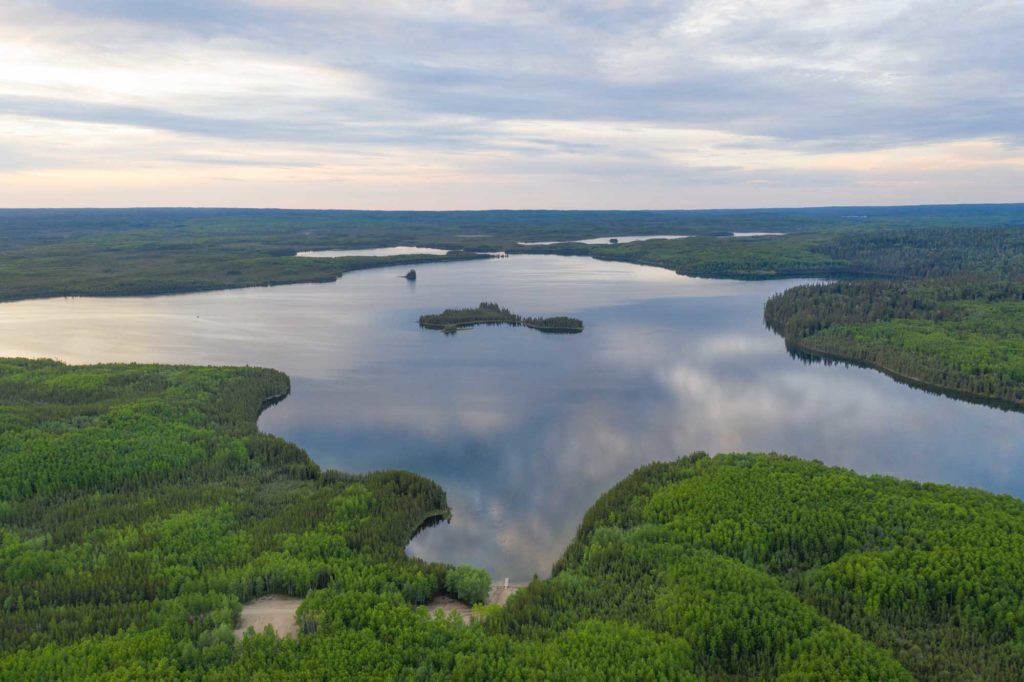
If you’re looking for adventure and true wilderness experiences, it’s definitely worth a trip to the northeast to experience what Hudson Bay, Saskatchewan has to offer.

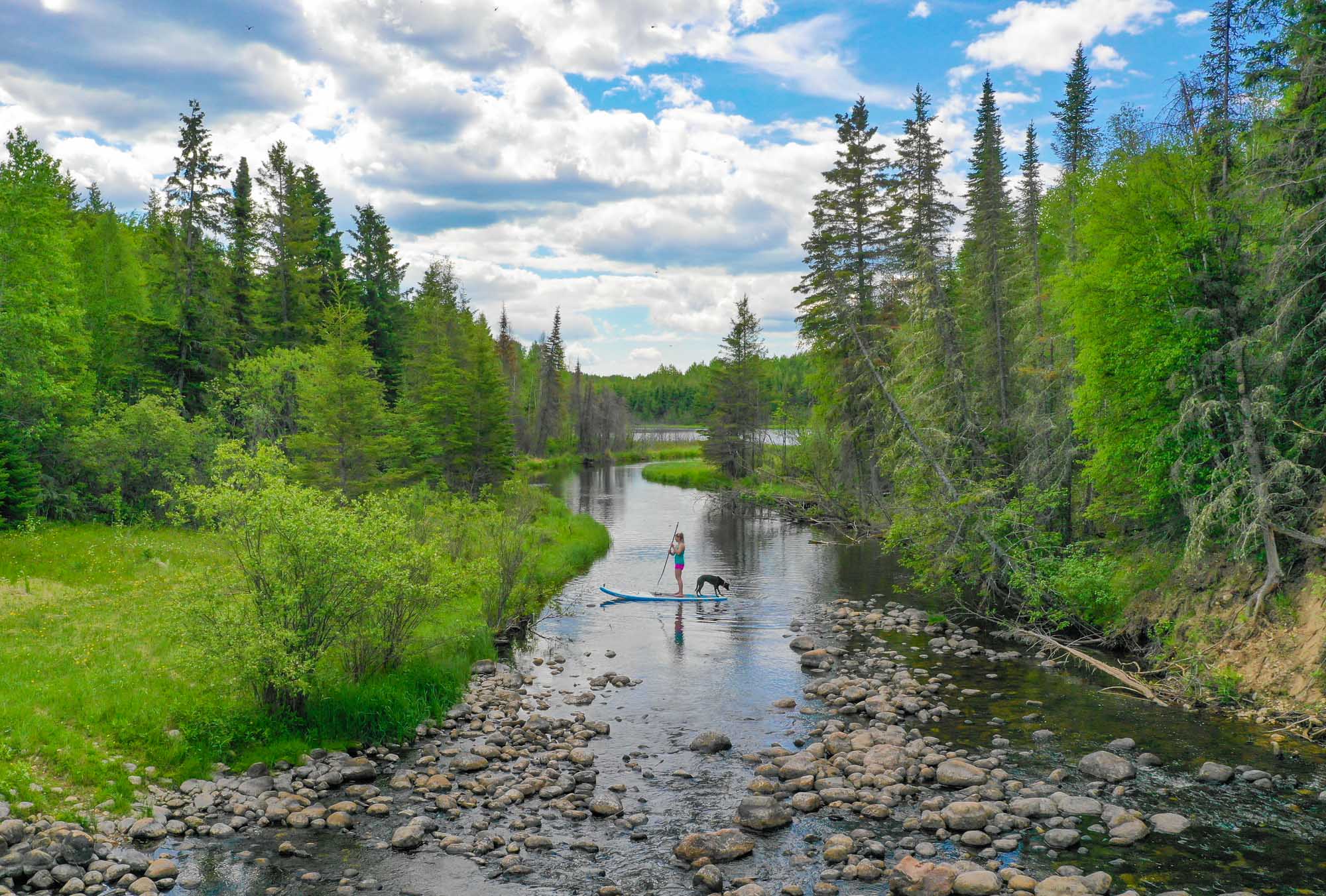

Happy to see you’ve mentioned geocaching! Indeed Saskatchewan is geocachers’ paradise, there are so many caches all over the province and we’re glad to have very active communities in multiple cities, who are organizing gatherings, celebrations and other events. Every time I’m planning a trip somewhere I look up if there are any caches hidden there, haha!
Ah cool to hear you’re an avid geocacher! They are so neat to find and some of them have such cool stories behind them too!